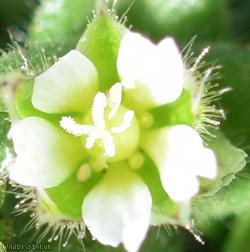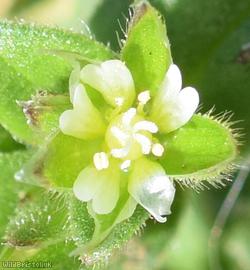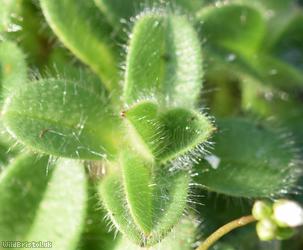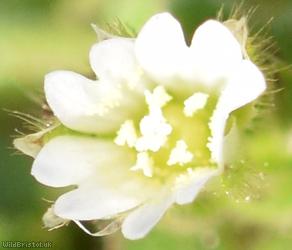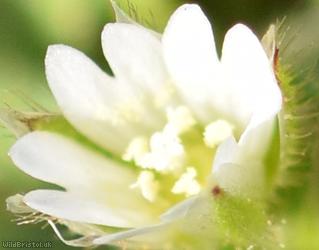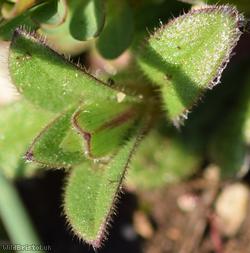Dwarf Mouse-ear - Cerastium pumilum
Favourite Photos
Species Description
Widespread but scarce, existing mainly in the S. England and N. Wales. Scattered elsewhere. Habitat includes: chalk / limestone substrates, open, barish patches within short-grazed grassland, sunny banks, cliffs, quarries, spoil heaps, railway lines etc. Annual / Bi-annual, herbaceous plant. Other names include: European Chickweed, Small Mouse-eared Chickweed. Height: 20 cm. Flowers: March to May. Similar to other Mouse-ears especially C. semidecandrum (Little Mouse-ear) but C. semidecandrum has upper most bracts scarious for at least apical 1/3 (at most apical 1/4 in c. pumilum) with petals that are distinctly shorter (about 2/3 as long) than sepals (petals about as long as sepals in C. pumilum).
Stace 4:
Cerastium pumilum Curtis - Dwarf Mouse-ear.
Erect to ascending annual to 12cm, with abundant glandular and non-glandular hairs; bracts with scarious tips ≤1/4 total length; inflorescence diffuse at fruiting; flowers 5-merous; petals about as long as sepals; 2n=72, 90. Native; calcareous bare ground or open grassland; very scattered, Britain North to Leicestershire, Caernarvonshire, Denbighshire and Flintshire.
Key:
- Bracts with scarious tips; petals and stamens usually 5; capsule-teeth usually 10
- Uppermost bracts scarious for at most apical 1/4; petals about as long as sepals.
